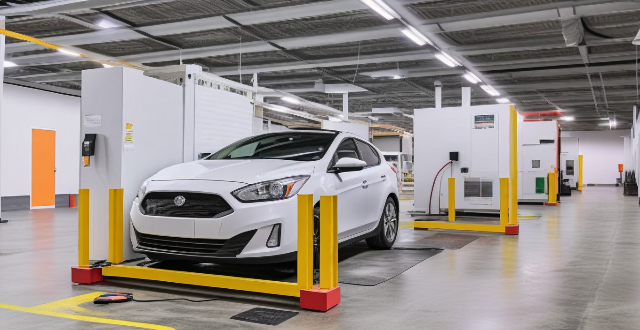Electric cars, or EVs, are powered by electricity stored in a battery pack, which is used to power an electric motor that turns the wheels. The process includes starting the car with power from the battery to the controller, which then sends electricity to the motor for acceleration. Braking involves regenerative braking that captures energy to recharge the battery. Charging the battery requires plugging into an external power source managed by an onboard charger. Electric cars boast higher energy efficiency, lower operating costs, reduced environmental impact, quieter operation, and simpler maintenance compared to traditional gasoline vehicles.

How Does an Electric Car Work?
Electric cars, also known as EVs (Electric Vehicles), are powered by electricity instead of traditional gasoline or diesel fuel. They operate using a combination of several key components that work together to provide power and movement. Let's dive into the details of how an electric car functions:
The Basic Components
Battery Pack
- This is the heart of the electric vehicle.
- It stores energy that is used to power the car.
- Made up of multiple cells like those in a typical AA battery but much larger.
Motor
- Powered by the electricity from the battery pack.
- Turns the wheels, propelling the car forward.
- There are different types such as AC induction motors and permanent magnet synchronous motors.
Onboard Charger
- Takes electricity from an external source (like a wall socket) and charges the battery pack.
- Can be charged using different levels of power, with faster charging available at specialized stations.
Controller
- The brain of the electric car.
- Controls the flow of electricity from the batteries to the motor.
- Ensures efficient use of power and can regenerate energy during braking.
The Process of Driving an Electric Car
Starting the Car
- When you turn on the car, power flows from the battery to the controller.
- The controller sends the necessary amount of electricity to the motor.
Accelerating
- As you press the accelerator, the controller increases the power sent to the motor.
- The motor spins faster, which turns the wheels more quickly, making the car accelerate.
Braking and Regenerative Braking
- When you brake, the controller can reverse the motor's function, turning it into a generator.
- This process, known as regenerative braking, captures some of the energy normally lost during braking and uses it to recharge the battery.
Charging the Battery
- To recharge the battery, you plug the car into an external power source.
- The onboard charger manages the current and voltage to safely replenish the battery pack.
Energy Efficiency
- Electric cars convert over 85% of the electrical energy from the plug into power at the wheels—a much higher efficiency rate than gasoline vehicles.
- They do not have the same amount of energy losses associated with engines, like heat loss through the radiator.
Advantages of Electric Cars
- Lower operating costs: Electricity is generally cheaper than gasoline per mile.
- Reduced environmental impact: They produce zero tailpipe emissions.
- Quieter operation: Electric motors run more quietly than internal combustion engines.
- Simpler maintenance: Fewer moving parts mean less wear and tear.
In conclusion, electric cars offer a clean, efficient, and increasingly viable alternative to traditional vehicles. As technology continues to improve and infrastructure expands, they are set to play an even greater role in our transportation future.